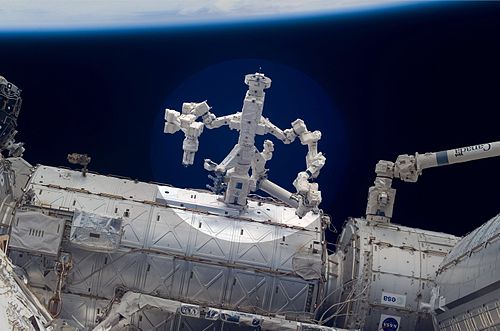 Promotional Poster | |
| Mission type | Long-duration expedition |
|---|---|
| Expedition | |
| Space station | International Space Station |
| Began | 13 May 2014 UTC |
| Ended | 10 September 2014 UTC |
| Arrived aboard | Soyuz TMA-12M Soyuz TMA-13M |
| Departed aboard | Soyuz TMA-12M Soyuz TMA-13M |
| Crew | |
| Crew size | 6 |
| Members | Expedition 39/40: Steven R. Swanson Aleksandr Skvortsov Oleg Artemyev Expedition 40/41: Gregory R. Wiseman Maksim Surayev Alexander Gerst |
 Expedition 40 mission patch  (l-r) Skvortsov, Swanson, Artemyev, Gerst, Surayev and Wiseman | |
Expedition 40 was the 40th expedition to the International Space Station. A portion of the Expedition 39 crew transferred to Expedition 40 while the remainder of the crew launched on May 28, 2014 from Baikonur Cosmodrome in Kazakhstan.
Contents
Upon achieving orbit approximately nine minutes after launch, Soyuz TMA-13M, delivering the remainder of the crew, began a four-orbit rendezvous with the International Space Station. Soyuz TMA-13M subsequently docked with the Rassvet module of the ISS at 1:44 UTC on May 29. Hatches were opened between the two spacecraft just over two hours later at 3:52 UTC. The expedition ended with the undocking of Soyuz TMA-12M on September 10, 2014. The remainder of Expedition 40's crew joined Expedition 41. [1]

